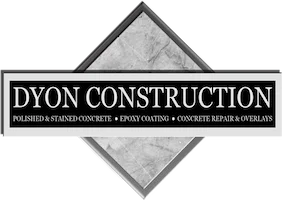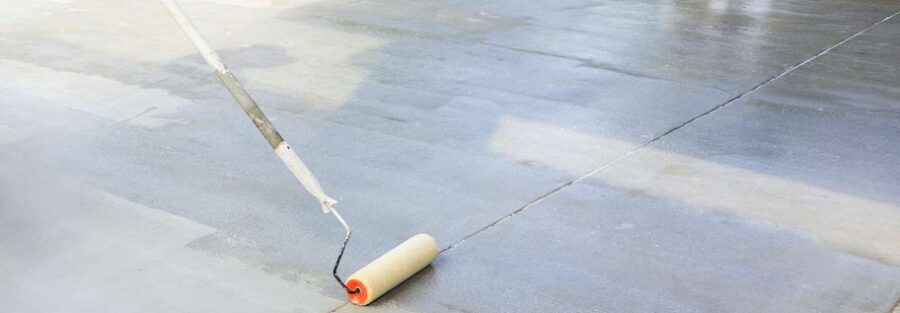Introduction
Selecting the perfect finish for your concrete surfaces can significantly impact the overall aesthetic and longevity of your floors, patios, or countertops. Concrete staining and concrete painting are two popular methods for enhancing the appearance and durability of concrete. Each technique offers unique advantages and potential drawbacks. This article explores the characteristics of concrete staining and painting, providing a detailed comparison to guide you in making an informed decision for your specific needs.
Overview of Concrete Staining
Concrete staining is a process that involves applying a translucent, penetrating stain to the concrete surface. This method allows for the creation of rich, variegated color tones that enhance the natural look of the concrete. Stains can be either acid-based or water-based. Acid-based stains react chemically with the concrete to produce earthy, organic hues, while water-based stains offer a broader spectrum of colors and a more consistent finish. Staining is prized for its ability to create a long-lasting, unique finish that is integral to the concrete itself, ensuring that it does not peel or flake over time.
Overview of Concrete Painting
Concrete painting involves applying a layer of paint specifically formulated for concrete surfaces. This paint can be either acrylic or epoxy-based, providing a solid, opaque color that sits on top of the concrete. Concrete paint is ideal for those seeking vibrant, uniform color and protection for their surfaces. The process typically includes surface preparation, application of a primer, and multiple coats of paint, followed by a sealer to enhance durability. Painting offers versatility in terms of color and finish, ranging from matte to glossy.
Pros and Cons of Concrete Staining
Concrete staining offers several notable benefits. It penetrates the surface, creating a permanent color that won’t fade, chip, or peel. The natural variation in color produced by the staining process adds depth and character, making it ideal for enhancing the natural beauty of concrete. Additionally, stains are UV stable and resistant to moisture, making them suitable for both indoor and outdoor applications.
However, concrete staining has its limitations. The color palette, particularly with acid-based stains, tends to be more subdued, which may not suit all design preferences. The staining process can also be labor-intensive and requires thorough surface preparation to ensure even absorption of the stain. Once applied, the color is permanent, which means corrections or changes can be challenging and might require professional intervention.
Pros and Cons of Concrete Painting
Concrete painting provides a broad range of color options and finishes, allowing for extensive customization. The opacity of paint can cover imperfections in the concrete, offering a fresh, uniform appearance. This method also provides an additional layer of protection against wear and environmental factors, enhancing the durability of the surface.
On the downside, concrete paint tends to sit on the surface, which makes it more susceptible to chipping, peeling, and wear, especially in high-traffic areas. Maintenance can be more demanding, as painted surfaces may require periodic touch-ups or reapplication. Additionally, the preparation and application process is crucial to ensure proper adhesion, which can be time-consuming and requires precision.
Cost Comparison
Cost is a significant consideration when choosing between concrete staining and painting. Concrete staining generally involves higher initial costs due to the specialized materials and labor-intensive application process. However, its durability and minimal maintenance requirements can result in long-term savings.
Concrete painting typically has a lower upfront cost, making it an attractive option for budget-conscious projects. The materials are generally less expensive, and the application process can be quicker and less labor-intensive. However, the need for periodic maintenance and potential reapplication can increase the overall cost over time.
Durability and Longevity
Durability and longevity are critical factors in choosing the right finish. Concrete staining penetrates the surface, creating a permanent color that resists fading, chipping, and peeling. This makes stained concrete highly durable and low-maintenance, capable of withstanding heavy use and environmental exposure without significant degradation.
Concrete painting, while providing a protective layer, is more prone to surface wear. High-traffic areas can see chipping and peeling over time, necessitating more frequent maintenance. The longevity of a painted surface largely depends on the quality of the paint and the thoroughness of the application process. Properly applied and maintained, painted concrete can offer several years of vibrant color and protection.
Aesthetic Differences
Aesthetic preferences play a major role in the decision-making process. Concrete staining offers a more natural, variegated look that enhances the inherent beauty of the concrete. The colors achieved through staining tend to be more earthy and subdued, creating a sophisticated, organic appearance. This makes staining an excellent choice for those seeking a timeless and elegant look.
Concrete painting, on the other hand, provides bold, consistent color options that can dramatically alter the appearance of a space. The broad range of colors and finishes available allows for greater creative expression and customization. Painted concrete can achieve a modern, clean look that can be tailored to match any design scheme.
Conclusion
Both concrete staining and painting offer distinct advantages and are suitable for different applications and aesthetic preferences. Concrete staining provides a durable, natural finish that enhances the beauty of the concrete, making it ideal for those seeking a long-lasting, low-maintenance solution. Concrete painting offers vibrant, customizable color options that can cover imperfections and provide a fresh, modern look, albeit with a higher maintenance requirement. By considering factors such as cost, durability, and desired aesthetic, you can choose the concrete finishing method that best suits your needs and enhances your space.

